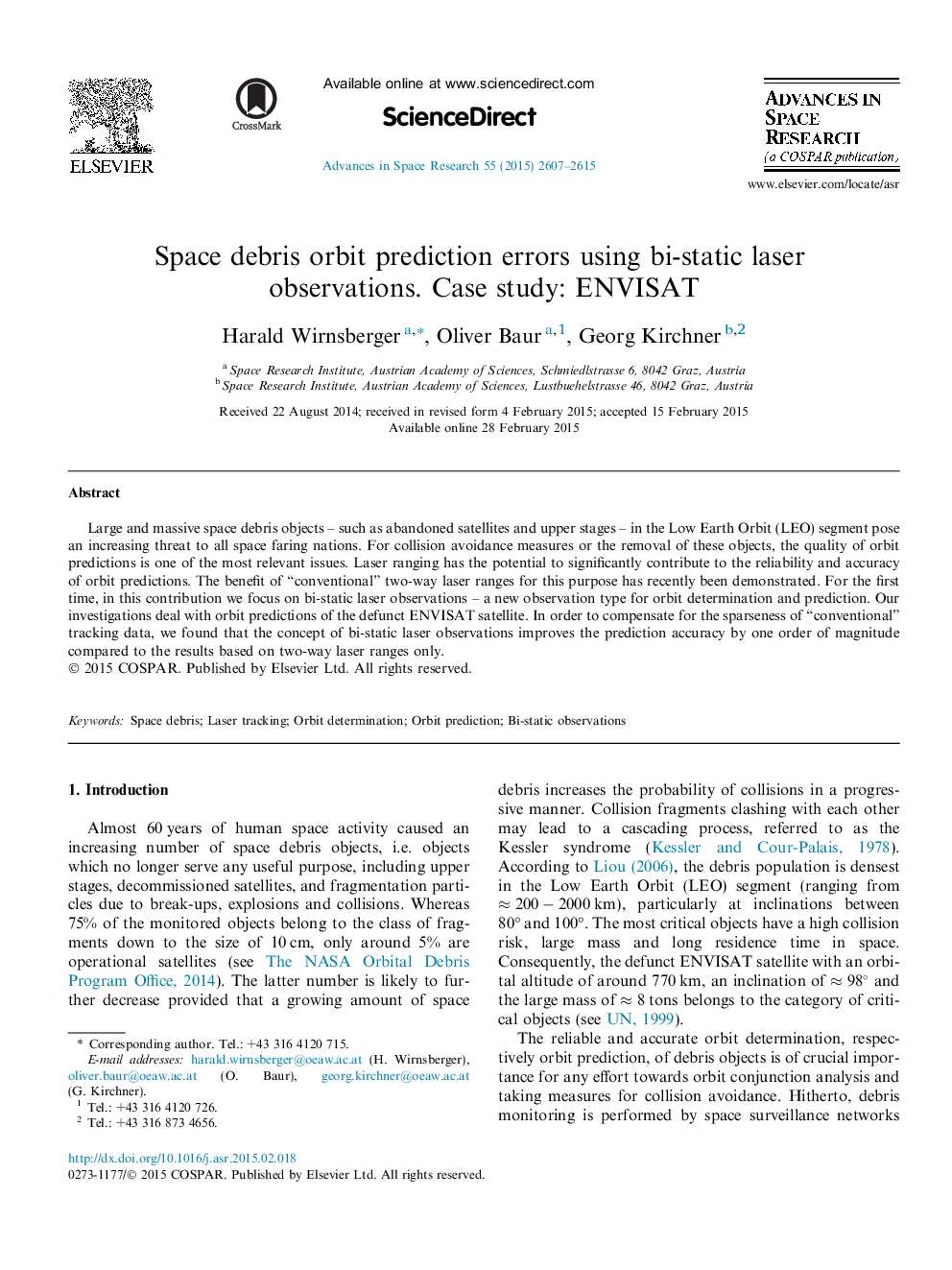| Article ID | Journal | Published Year | Pages | File Type |
|---|---|---|---|---|
| 1763407 | Advances in Space Research | 2015 | 9 Pages |
Large and massive space debris objects – such as abandoned satellites and upper stages – in the Low Earth Orbit (LEO) segment pose an increasing threat to all space faring nations. For collision avoidance measures or the removal of these objects, the quality of orbit predictions is one of the most relevant issues. Laser ranging has the potential to significantly contribute to the reliability and accuracy of orbit predictions. The benefit of “conventional” two-way laser ranges for this purpose has recently been demonstrated. For the first time, in this contribution we focus on bi-static laser observations – a new observation type for orbit determination and prediction. Our investigations deal with orbit predictions of the defunct ENVISAT satellite. In order to compensate for the sparseness of “conventional” tracking data, we found that the concept of bi-static laser observations improves the prediction accuracy by one order of magnitude compared to the results based on two-way laser ranges only.
